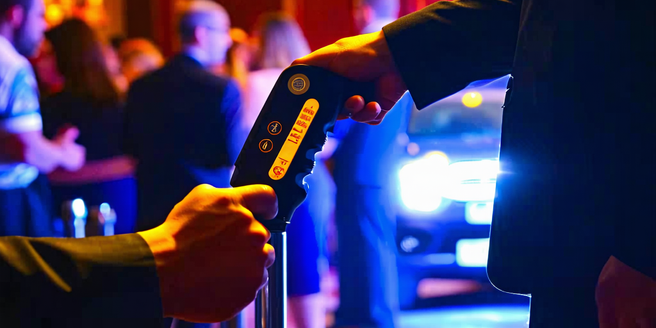
Understanding the Importance of Security in Clubs
In clubs, security is paramount for ensuring a safe environment for both members and guests. A strong security framework protects the club’s assets and helps maintain order. It prevents unauthorized access and mitigates risks associated with theft, vandalism, and violence. A well-coordinated security protocol involves trained personnel, surveillance technologies, and strict access controls. Clubs must evaluate their security needs and develop comprehensive strategies to address potential threats. Implementing such measures not only enhances the club’s reputation but ensures the well-being of all patrons. Effective communication between staff and members is crucial to addressing security concerns swiftly and appropriately.
Different Types of Security Measures in Clubs
Clubs employ various security measures to ensure the safety of their premises. These include deploying bouncers at entry points to verify ID and frisk individuals if necessary. Surveillance cameras are strategically placed to monitor activities and deter potential misbehavior. Metal detectors may be used to prevent weapons from being brought inside. Access control systems, such as key cards or biometric scanners, restrict entry to authorized individuals. Regular patrols by security personnel help maintain a visible presence and respond to incidents promptly. Implementing layered security strategies allows clubs to address diverse threats effectively and create a secure environment for guests.
Privacy Concerns for Club Members and Guests
Maintaining privacy for club members and guests is a significant concern, as privacy breaches can lead to distrust and reputation damage. Clubs collect personal data for membership processes and may use surveillance systems for security purposes. Ensuring this data is secure and not misused calls for robust data protection policies. Transparency about data collection processes reassures members and guests. Staff must be trained to handle sensitive information discreetly, while technology systems should be secured against unauthorized access. Striking a balance between security and privacy ensures that patrons feel safe without compromising their personal data.
Balancing Security and Privacy: Best Practices
Clubs must strike a balance between stringent security measures and respecting the privacy of members and guests. This can be achieved by implementing best practices like conducting regular security audits to assess vulnerabilities and updating protocols accordingly. Additionally, involving members in discussions about security practices can provide valuable insights and promote a sense of community. Clear communication with patrons regarding security measures and privacy policies fosters trust. Minimizing intrusive surveillance and opting for less invasive technology ensures privacy is maintained. Training staff in handling sensitive situations with discretion further supports this balance. By adopting a thoughtful approach, clubs can prioritize safety without infringing on personal freedoms or privacy.
Technological Advancements in Club Security Systems
Advancements in technology have revolutionized security systems in clubs, making them more efficient and less obtrusive. Modern surveillance systems feature high-definition cameras with facial recognition capabilities, enabling quick identification of potential threats. Access control systems are now more secure, utilizing biometric authentication and mobile credentials. Integration of AI in monitoring systems allows for real-time analysis and alerts for suspicious activities. Furthermore, clubs can now tailor their security measures to suit specific needs, ensuring a targeted approach to safety. Moreover, communication between security personnel and the use of incident management software streamline responses to emergencies. Embracing these technological advancements enables clubs to enhance their security while maintaining a seamless experience for guests.
Future Trends in Ensuring Safety and Privacy in Clubs
The future of club security will see increased reliance on advanced technologies to ensure safety and privacy. AI-driven analytics will anticipate security threats and enable proactive measures. Enhanced biometric systems will offer seamless entry solutions while maintaining robust security. Data encryption and blockchain technology will safeguard personal information, addressing privacy concerns. Virtual reality simulations for staff training will improve response strategies for emergencies. Clubs will invest in the latest technology to stay ahead of potential threats. Additionally, collaboration with cybersecurity experts will become standard practice to protect digital infrastructure. By adopting these emerging trends, clubs can provide a safe, welcoming environment that respects privacy and security.
